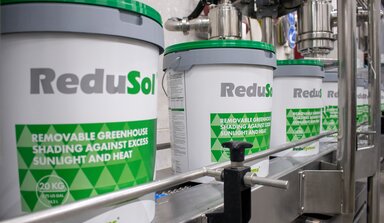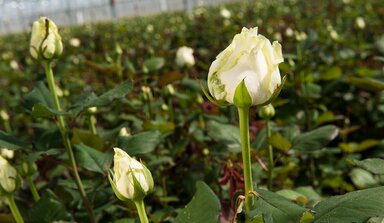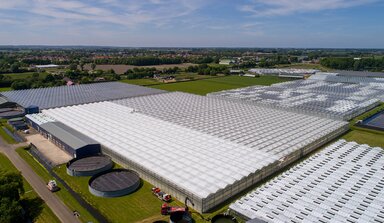Sunlight can be effectively managed in any season
Consultants Jelle Hoogland and Paul van Gils provide tips for the rational and efficient use of coatings. “A key question is, under what conditions does the plant suffer most? This is when you need to intervene,” says Hoogland. Paul van Gils looks back on past seasons: “We have learned a great deal during this time. You can no longer react ad-hoc to the weather. It is far more rational to plan when to apply your coatings in advance.”
Balanced crop
Climate change and the weather’s increased changeability make greenhouse cultivation more complicated. In the past you tried to capture as much light as possible in the spring to enable the crop to develop fast. However, nowadays there can be days early in the year that are so hot that the crop receives a blow whose effect lingers on for a long time.
“Plants rather benefit from calm and balance. Changeability consumes energy. This supports the argument that you should start applying coatings somewhat sooner than in the past. And furthermore, to plan for this in advance so that you can do it at exactly the right time,” says Van Gils.
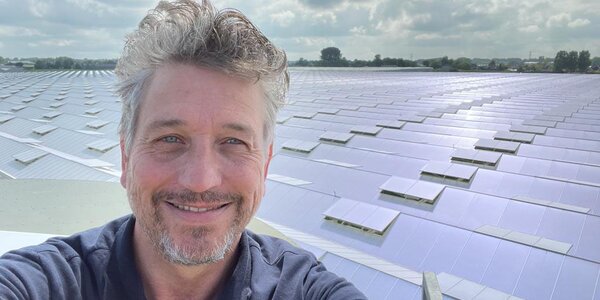
Paul van Gils
Light Plan
Working on the basis of a light plan for the entire year is a must in this respect. To develop this plan it is important to have insight into the maximum light level at which the crop still grows well.
Van Gils: “In addition, you must be able to accept that when you apply coatings early in the season you will have a few days with less light. Theoretically speaking that goes at the expense of production. But the balance within the crop compensates for this. This is because coatings make it possible to adhere to the principles of The New Cultivation Approach or Plant Empowerment. In other words, the key focus is on creating balance.
When a coating has been applied to the greenhouse cover, you can keep the vent windows closed more often in order to keep CO2 inside and humidity up to par. This enables you to better control the balance between temperature, CO2 and humidity, which ultimately results in increased production. This amply offsets a few days of less light in spring.”
More light = more energy
Excessive light and heat in the summer force everyone to intervene. For a long time there was no need for coatings for the rest of the year. But you can also better control natural light during that period. In this respect it is good to think in terms of energy, says Hoogland. “More light in the greenhouse means extra energy. This causes the plants to become active faster; you are starting the engine sooner. Furthermore, this saves on heating costs,” he says.
A very simple way of getting more light into the greenhouse, is to clean it more often. “When you look up and you notice that the greenhouse cover is a little dirty, you are already losing 5% or more light. That has a major cascading effect. You can solve that problem at very low cost. Timely cleaning – the outside, as well as the inside – also is part of the annual light plan.”
ReduSystems provides GS-4 for this purpose, a highly effective product available on the market.
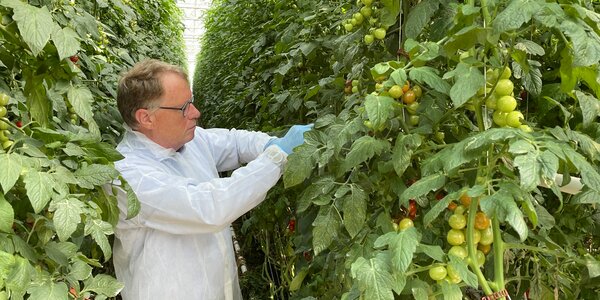
Jelle Hoogland
Condensation
Another high-impact factor is condensation. The greenhouse cover is wet for a large part of the year. Whether the condensation is in the form of droplets or spreads itself out over the greenhouse cover as a film makes a huge difference. The former blocks a lot of light, while the latter actually somewhat improves light transmission. The AntiCondens coating helps create a film and this helps improve light incidence.
Hoogland: “This involves 5-7% more light in a glass greenhouse and much more in a plastic greenhouse. This is a significant amount. This results in a more robust crop and enables you to grow your crop somewhat faster due to the improved temperature-light ratio (RTR),” he says.
The improved distribution of condensation is especially beneficial in the early autumn. Hoogland: “In August and September the greenhouse often contains a well-developed crop with a high level of evaporation. This is when there is a lot of condensation on the glass. When you then improve the light incidence in the greenhouse this has a positive effect on production and quality, and this also reduces the risk of disease.”
Plan-based application of AntiCondens
AntiCondens must be applied on the inside to a dry greenhouse cover. In actual practice this proves to be a challenge. But there is a solution here as well: plan-based thinking.
“Change illuminated crops in the early spring. Applying AntiCondens to a dry greenhouse cover is not a problem then. You need to plan for this, however. Changing crops in the winter often means that the greenhouse cover is wet. Growers are then reluctant to heat the greenhouse to dry up the glass. However, the additional heating costs amply pay for themselves later on. Not right away in winter, but most certainly in spring and in the early autumn. If you devote ample attention to cleaning and coating during a crop change, you will have more energy inside the greenhouse during the rest of the year.”
